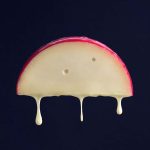
We Are MA: Caroline Hyde-Brown, MA Textile Design
We Are MA looks at the diverse practices and backgrounds of NUA’s MA students. MA Textile Design student Caroline Hyde-Brown give us an insight into her practice which is based heavily around sustainability and creating everything from paper.

When I completed my degree from Nottingham & Trent University in 1995, I never thought that I would be making handmade paper for my MA postgraduate study. Sustainability is an integral part of my practice and creating something special from waste has always interested me.
The transformation from a humble piece of wastepaper is aptly described by writer Marion Elliot as a ‘chameleon craft’ capable of imitating many different materials. (Elliot, 2015).

I cannot imagine life without paper. As a child I made lots of things out of scraps and cardboard.
I had a wonderful collection of stationery. Scissors, glue, paint, and colouring pens were my constant companion as a personal understanding of creativity and practical knowledge grew.
Paper is a ‘practical utensil, a working tool, a carrier of memoirs, laws, and deposit of remembrance’. (Holt, Von Velsen, Jacobs, 2018).

Essentially, paper is ‘mashed or boiled plant fibres soaked in pure mineral water’. Historic written evidence cites this simple recipe as being developed over two thousand years ago in China, where writing was done on silk or bamboo strips.
A slow journey across the world ensued, taking several hundred years, until it became the paper industry that we all know today.
Modern day paper has chemicals, fillers, minerals, and dyes added to it. As printing technology has developed and the demand for books and newspapers increased, the rags that were originally used became difficult to find.
In 1794, an entomologist called Rene de Reamur, observed that wasps make their nests from regurgitated wood, producing intricate papery structures. (Hiebert, H 2000).
The first paper produced from tree pulp was in Germany in 1800, but paper artists still experiment using a whole realm of materials such as plants, tree bark, fishnets, hemp, cotton, and linen. T
he paper I make, is simply plant residue from the garden or compost heap, mixed in with recycled packaging waste and cotton rags.
I use harvested rainwater from the well and solar heat from the sun (when we have some!) to dry the sheets, investing a huge amount of time for experimentation and investigation.
The raw materials are macerated in a food blender, broken down into tiny fibres and then formed into sheets on a screen that is constructed from waste wood and mesh.

There is a distinct and real connection between the location of the early paper mills and the important woollen and cloth making districts in Norwich.
Whenever I pass over Duke Street Bridge, I cannot help but think about the River Wensum.
The widespread immigration of the Huguenot refugees, prompted by the civil war in France during the revocation of the Edict of Nantes in 1685, had provided an influx of highly skilled labourers, most of whom were weavers and papermakers.
The mills were sited where there was a ‘good head of water’ (Stoker, D 1976). The pure water and currents of the river provided the large quantities needed during the manufacturing process, before the introduction of steam mechanisation with many of them later converted to corn milling.

Taverham Paper Mill became the most important in the county. Once a fuelling mill, the water that powered the hammers used to beat cloth, could easily be converted to making pulp for paper.
Records show that there were others, including one at Thetford that gathered rags from the Ouse basin, as well as one in Sheringham that may have used old sails and ropes from the shipping industry to produce a lower quality paper.
Later, in 1874 Carrow Paper Mill in King Street was built, and the cardboard produced was used for packing the goods made at Carrow Works. This was mainly ‘laundry, starch, blue and (naturally) mustard’. (Mason J, 2018).

Researching the history of paper making in Norfolk has been a fascinating journey. During the eighteenth century, historian and writer, David Stoker describes Norfolk as never having ‘a really important paper making industry or trade’ without any lasting influence on the economy.’
However, sixty years after the last mill closed, a huge facility called Palm Paper in Kings Lynn on the Great Ouse river opened in 2009. It houses the world’s largest and most powerful newsprint machine with production based solely from carefully selected and sorted recycled fibres and newsprint.
The latest environmentally friendly technologies operate at a speed of 2,000 metres per minute with the capacity to produce nearly half a million tonnes of newsprint per annum.
The company motto is ‘growth under our own steam’ and it has been founded on tradition and innovation. (Dr Wolfgang Palm, 2020).
Post published: 28th July 2021

